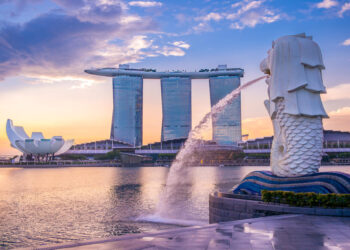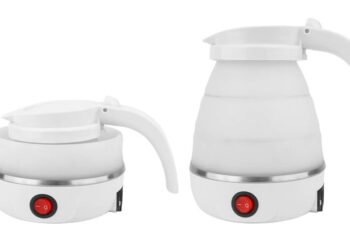Are you planning a trip to Singapore for the first time and looking for the best Singapore Travel Tips? Below you’ll find the best tips, and recommendations to ensure you have a great time in the Lion City. The first of several posts in our Singapore Travel Guide, the tips below come from experience traveling to Singapore across many trips, having learned the best ways to save money, optimize an itinerary, and experience the best things the city-state has to offer.
The Singapore travel tips listed below are not in any particular order. There is an overlap across many of them in terms of suitability and priority, given different travel preferences. The below tips relate to getting around the city, saving money, and how to make the most of a trip to Singapore. The focus of this list is to provide the most comprehensive Singapore travel tips for visitors who are looking for detailed information on traveling to the city-state.
The 40 Best Singapore Travel Tips
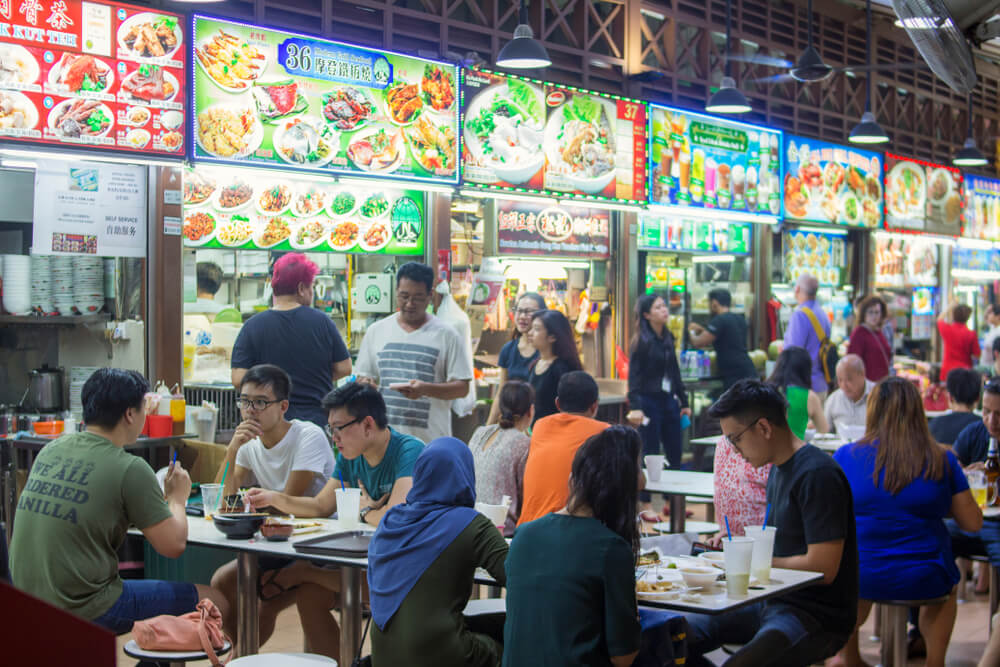
1. Eat at Hawker Centers
This is the first tip for a reason. Singapore’s hawker centers are such an integral part of everyday life, and they perfectly showcase the delicious food on offer in the city that it’s an essential stop for every visitor. Hawker centers are covered open-air food courts with numerous stalls, with each stall often selling only a few dishes that are local specialties. Their purpose is to offer locals affordable meals, and they can be found all over the city, featuring some of the best local food vendors. Many of them have even earned Michelin Guide recognition.
For visitors, hawker centers offer the best opportunity to try multiple local dishes for an affordable price. You’ll find popular options like chicken rice, laksa, prawn mee, chili crab, and much more. Best of all, the prices for many dishes can be as low as $5 SGD, making a hawker centre a budget-friendly essential visit.
2. Don’t Be Afraid of a Line
When visiting a hawker center, look for lines to indicate the more popular hawker stalls to find the best food. While it’s not guaranteed that the food won’t be good at stalls without lines, it does not provide the same vote of confidence that seeing a line does.
The lines will typically move quickly at hawker centers. Considering that Singaporeans are happy to line up for good food, locally known as queueing, don’t be surprised to see long queues for the most popular hawkers.
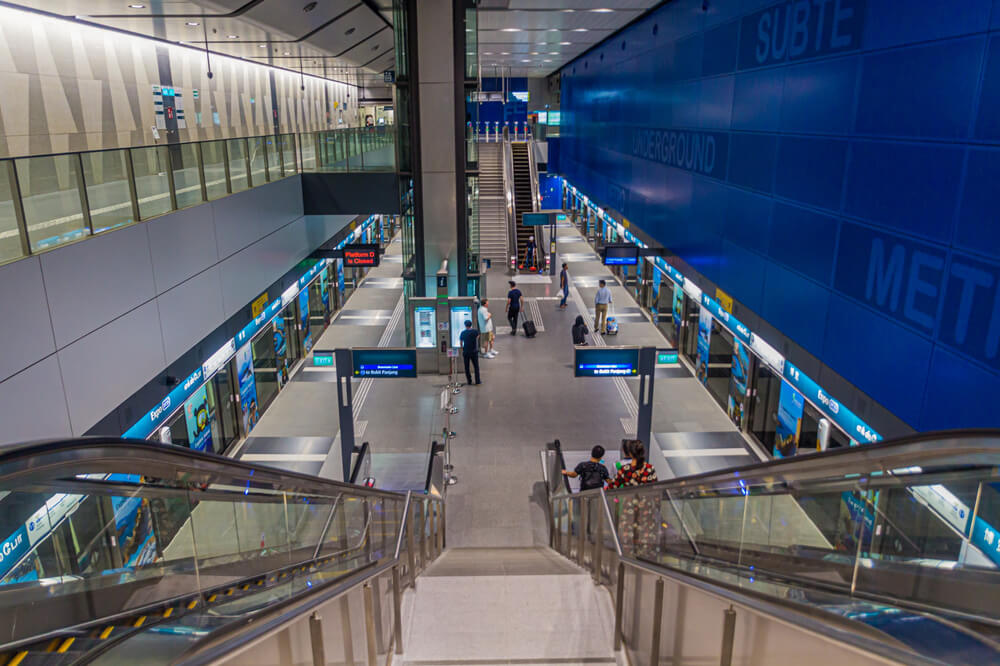
3. Get Around by MRT (Subway) or Buses
Singapore is well known for having one of the best transportation networks in the world. Its MRT rail network offers clean, efficient, and easy-to-use rail services throughout the city-state. For more challenging places to get to, there are easy-to-ride buses you can find with step-by-step instructions on google maps.
Considering the impressive public transportation in Singapore, it is the best way to save money during your visit. Fares for the MRT and buses provide the cheapest way to get around the entire island incredibly cheap, often less than $2 SGD, unless you travel long distances, which are even quite reasonable and far more affordable than a taxi.
4. Use Grab instead of Taxi
While Singapore’s taxis are clean, comfortable, and reasonably priced, hailing a cab can be challenging as they can only stop at designated places for taxis to pull off the road, so it can be confusing for visitors looking to wave one down.
Grab is similar to Uber (they bought out Uber’s Southeast Asia business in 2018) and offers cars, vans, and taxis through their app for easy pickup and easy directions to your destination, removing the hassle of providing the wrong address or bad directions.
Download and sign up for the app before your trip. Even if you expect to use public transportation, that tired moment you figure you may just take a taxi back to your hotel, you may find it challenging to find one or a pickup area.
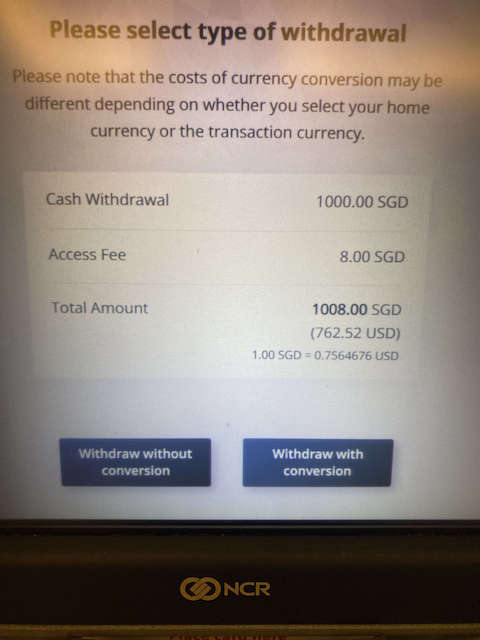
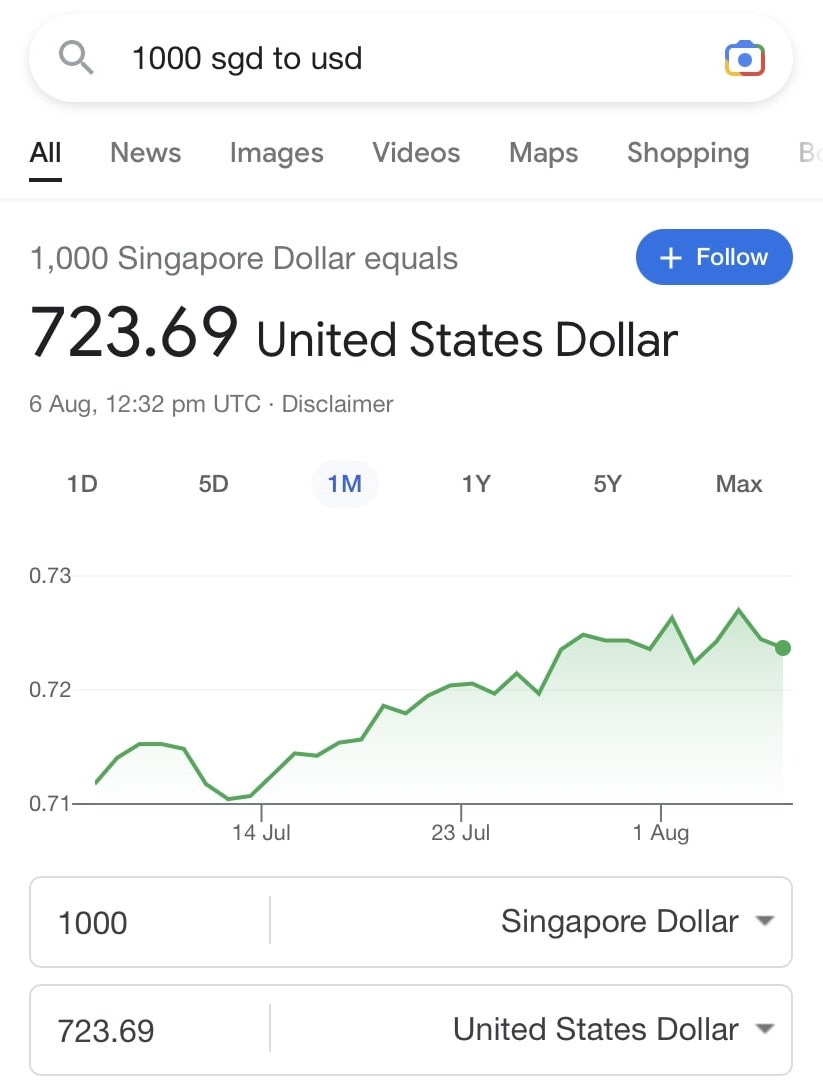
5. Don’t Lose Money With Dynamic Currency Conversion
Dynamic currency conversion offers customers using cards from other countries the ability to be charged in their home currency at both ATMs and Point of Sale Credit Card machines. To many visitors, this looks like the safe choice, and by agreeing to the conversion, the customer will unknowingly be charged more on a transaction or cash withdrawal. This currency conversion is offered all across Singapore.
Dynamic currency conversion is available when a bank that owns an ATM or a point of sale machine issuer provides the services to convert a currency for a customer. This conversion would be in place of having the card network, such as Visa, Mastercard, or American Express, perform the currency conversion, which typically happens when you use your card overseas. These card networks perform the conversion with competitive foreign exchange rates, with potentially a small foreign exchange fee that your bank or card issuer adds to the transaction.
The banks in Singapore that offer the dynamic currency conversion will typically offer a far less competitive foreign exchange rate, leading to customers paying a lot more for their transactions. This makes this one of the most important Singapore travel tips.
Dynamic Currency Conversion Example
An example of this is paying for your hotel bill with US Visa credit cards, and the hotel offers you to settle the bill in Singapore Dollars or US Dollars. The USD will seem like the safe choice, but the bank that operates the POS machine scanning your card is likely to offer you a far less competitive rate. On a $1,000 USD hotel bill, you could find yourself paying $50-100 USD more by settling the bill in USD on the credit card scanner. Choosing to be charged in SGD will generally always be a cheaper transaction.
The above photos show an example of dynamic currency conversion offered at an ATM vs. the exchange rates at the time of withdrawal. Using Visa’s website, and factoring a 3% foreign transaction fee, the actual USD withdrawal amount was $749.25, which saves $13.27 when compared to accepting the offer from the ATM.
Find more currency exchange tips for traveling here.
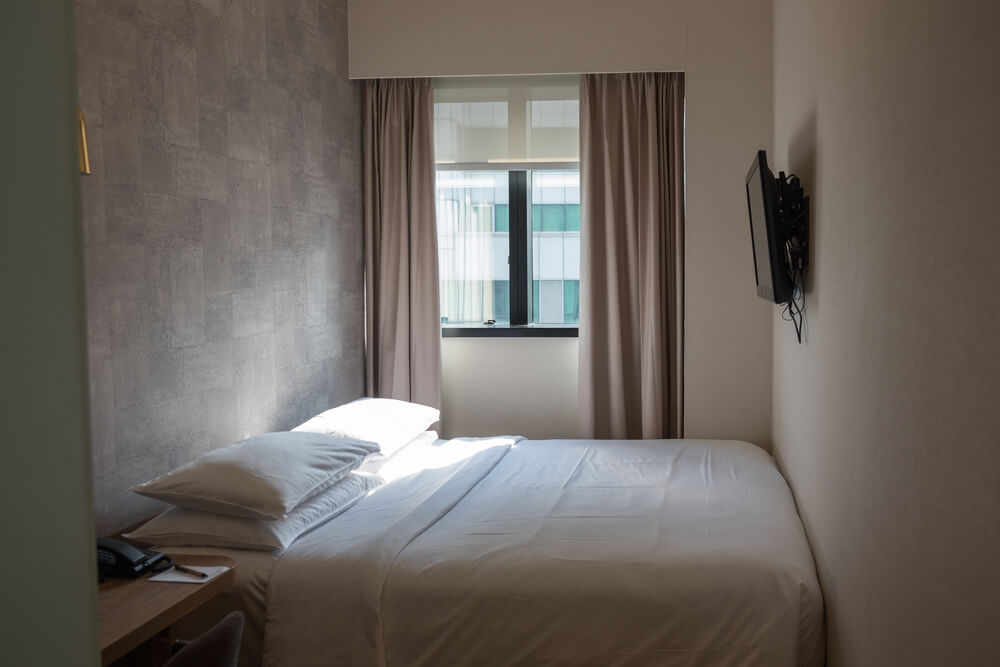
6. Confirm the Square footage Before Booking a Hotel
Singapore hotel rooms can be tiny at budget hotels. While you may feel that you have stumbled upon a great deal for a room online, it’s worth being aware of the actual size of the room. Plenty of spaces come in at just over 100 square feet. These will typically offer a shower, sink, toilet, and bed, with just enough room to squeeze along the bed on one side. There won’t be much room for luggage, and if you are sharing the room with your partner, it can be tight.
These small rooms can be a great way to save money for budget travelers. However, they are better appreciated by travelers who expect them before arriving, rather than being surprised on arrival. Look for over 200 square feet for more comfort and over 300 square feet for extra room to move around and sit on chairs other than the bed or desk.
7. Get Duty-Free Alcohol On Your Way In
Singapore has relatively high alcohol prices at bars, restaurants, and even convenience stores. Alcohol is not cheap compared to other countries. Travelers looking to celebrate or have a couple of drinks to wind down at the hotel should consider picking up some alcohol at the airport duty-free store upon arrival.
8. Eat a Variety of Foods, Then Repeat Your Favorites
With so many unique dishes available, Singapore has so many foods to try and experience. Some visitors may find one dish they like at the start of a trip and order it multiple times. While chicken rice or laksa may be delicious, don’t miss out on the other exceptional dishes by sticking to the ones you tried and enjoyed. Try as many as you can, and then repeat a dish or two towards the end of your trip.
9. Hydrate As Much As You Can
Singapore has hot weather year-round. Though the cloudy days and covered walkways may offer a little protection, those planning long days outside sightseeing should be mindful of dehydration. Hydrate yourself throughout the day, especially if you spend a lot of time in the mid-day sun. Looking for a refreshing way to hydrate? Hawker centers have drink stands that offer refreshing juices, cold coconuts, and freshly ground sugarcane juice.
10. Bring a Water Bottle
Save some money and avoided buying additional single-use plastics. Singapore has clean tap water throughout the city; if water isn’t safe to drink, there will be a sign on the tap that tells you.
11. Avoid Mid-Day Sun to Avoid the Heat and Help Your Jetlag
The mid-day Sun in Singapore can drain you of energy and fluids quite quickly. Those with aggressive sightseeing plans may find they can’t keep up in the same way as they might in other cities. Plan around the heat and sun by heading out of your hotel early, enjoying the morning hours outside, and then looking for a break from mid-day to late afternoon.
Consider a visit to one of Singapore’s museums in the early afternoon, or head to your hotel for a nap or time by the pool before heading back out to explore the city from late afternoon into the evening.
12. Consider Carrying a Small Cardigan or Extra Layer
In Singapore, many malls and restaurants like to blast their air conditioning to provide relief from the heat. For most, it will be a welcome temperature; for those who get cold quickly, it can create an unexpected challenge with packing. If you are someone who gets cold quickly, consider packing a small sweater or layer that you can carry in your daypack for when you go to malls or colder restaurants.
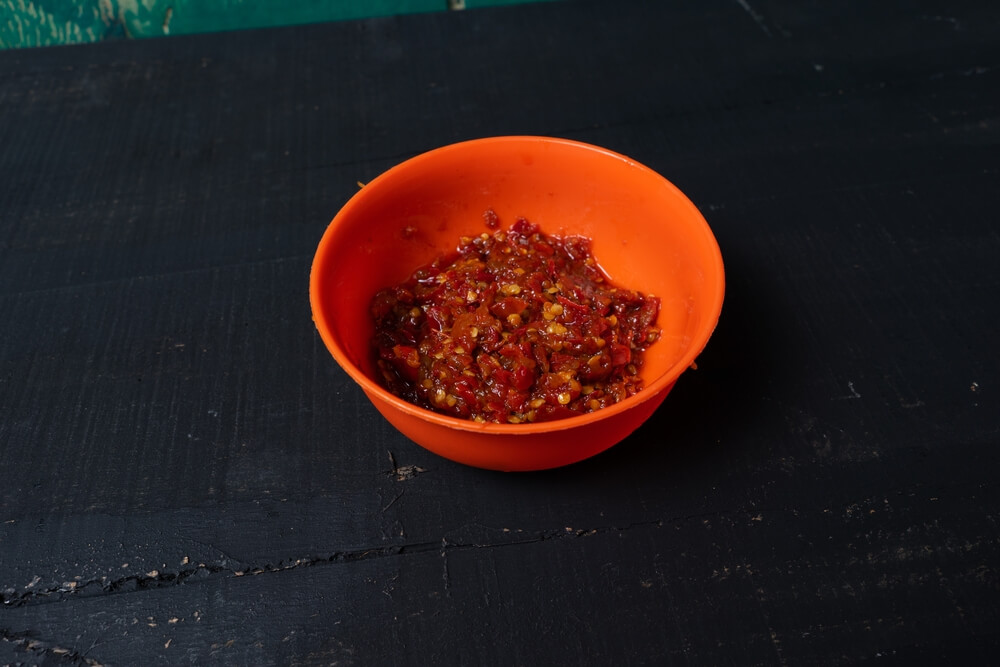
13. Test the Chili Sauce Before Adding to Your Food
Singaporean food can be pretty spicy, and locals love chili sauce and peppers. Many dishes at hawker centers and restaurants come with a small condiment bowl of chili sauce or peppers. Be sure to taste it quickly before adding it to your dish. Plenty of visitors have unknowingly added more than they can handle by underestimating the spice levels in the city. Sampling condiments and sauces before adding can help save you from ruining a dish you might have loved.
14. Skip Room Service, Order Food From Grab
In addition to offering ride-hailing services from their app, Grab also provides food delivery, similar to Uber Eats. Considering the often over-priced and mediocre room service options available at hotels, Grab offers a broader selection of local restaurants, dishes, and budget-friendly choices for a larger family. If you are too tired to leave the hotel, you can still get local Singaporean food or comfort food from familiar chains dropped off at your hotel lobby.
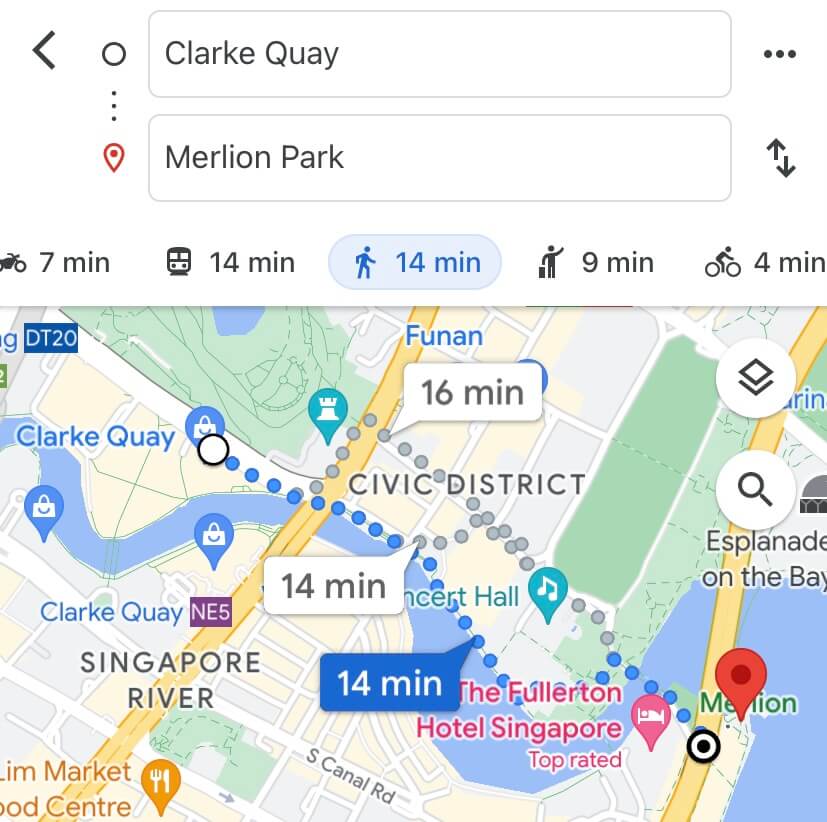
15. Find Your Way Google Maps
Hands down one of the best travel apps ever for international travelers, Google Maps has excellent coverage in Singapore and provides the best directions to get around the city. From accurate walking directions to public transportation navigation that takes you directly to the MRT station exit or bus stop, Google Maps is a travel essential for a trip to Singapore. Make sure to download the free app for the best user experience.
16. No Need to Tip
Singapore does not have a tipping culture, and there are no expectations for tips for any services. However, more corporate restaurants, especially hotel F&B outlets, will often charge a 10% service charge, in addition to the 7% Goods and Services Tax (GST), though this is one of the rare occurrences. Outside of the service charges that may be added to specific restaurant or bar bills, you don’t need to tip anywhere during your visit to Singapore.
17. Know the Voltage of Your Device
Singapore operates on a 230V electric supply, while the US and Canada run on 120V. For hair dryers, plug-in electric razors, and other electric devices that run on a motor, you should check if they are dual voltage devices or consider packing a power converter.
18. Have Plans for Rainy Days or Rainy Parts of Days
Singapore is in a tropical climate and receives, on average, 167 days that include some rainfall each year. While plenty of days may have only a brief period of rain, others can see rainfall throughout the day. Therefore, plan your itinerary to have activities or attractions that can be enjoyed on a rainy day. With plenty of museums on offer, shopping, gambling, and several covered hawker centers, there are several places to go when the rain starts.
19. If it Rains, Try to Wait it Out
While downpours can start quite suddenly, they can also stop as fast. So if you get caught somewhere in the rain, consider waiting for a little to see if the rain clouds pass. Singapore often sees a weather pattern of a few rain clouds passing through the city within a more extensive cloud system. Though it is not guaranteed that you’ll find better weather for the rest of the day, letting an isolated shower pass will allow you to enjoy the rest of the attraction you are visiting once it stops.
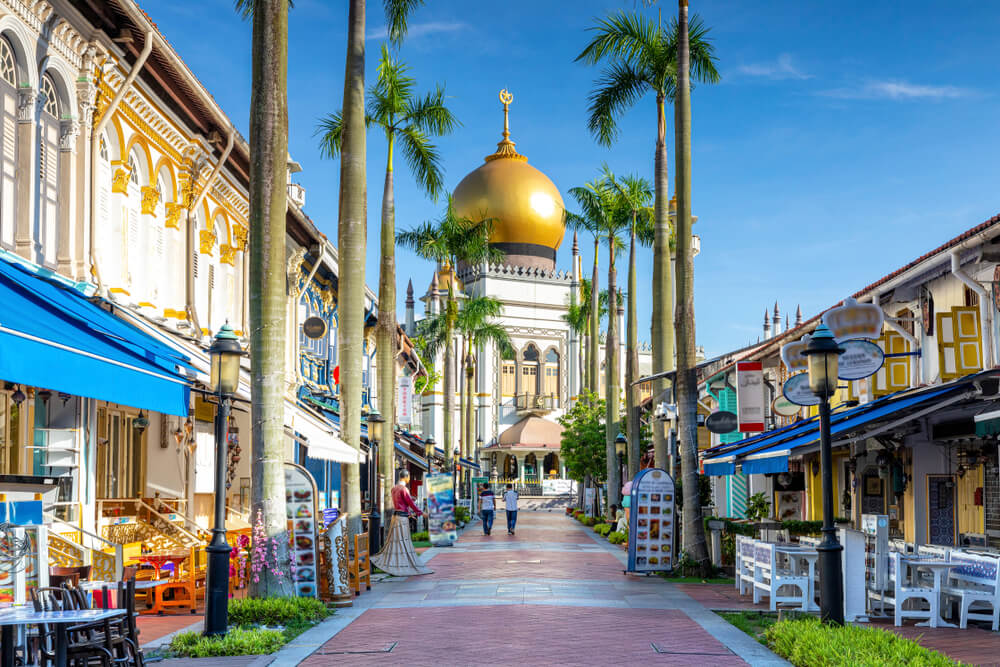
20. Explore Singapore’s Unique Neighborhoods
Venture out from the typical Chinatown, Marina Bay, Orchard Road, and Sentosa Island itinerary to explore some of Singapore’s unique neighborhoods. Little India offers a South Asian cultural experience, while nearby Kampong Glam has colorful streets, like Arab Street, that are full of street art, along with the nearby former home of Malay royalty. Tiong Bahru is a hipster haven with unique art deco buildings on its street corners, which contrasts against Katong and Joo Chiat’s colorful Peranakan shophouses, which are iconic Singapore attractions.
Carve out some time in your itinerary to see these places outside Central Singapore, as they offer culturally unique neighborhoods for a memorable experience during your visit.
21. Carry a Few Packs of Tissues
Humble Singapore restaurants and hawker centers rarely provide napkins for diners. Instead, locals will carry small packs of tissues that can be bought at convenience stores and shops throughout the city. So throw a few packs of tissues in your day pack to ensure you have something to wipe off your hands while you eat.
22. Don’t Sit at a Table With a Pack of Tissues on it
Known locally as “chope-ing seats,” Singaporeans will often reserve a table or seats at a table by placing a pack of tissues or some other small, inexpensive item at them. This seat-saving style is often seen at hawker centers or food courts during peak hours.
For larger tables, you may see these reserving only a couple of seats, leaving the rest of them open. While locals understand that visitors may not know how the system works, it’s worth being courteous and respectful when looking for seats or a table.
23. Be Prepared to Spend
Consistently ranked as one of the most expensive cities in the world, Singapore has an unusual mix of prices that may help or hurt depending on your travel style. The country stands out in Southeast Asia as its neighbors are all typically viewed as cheaper destinations. As a result, expect hotels and accommodation rates to be higher compared to many global cities. The same can be said for alcohol and high-end dining. On the other hand, local food options and public transportation are incredibly budget-friendly, and taxi or ride-hailing app fares are reasonably priced.
24. Explore Singapore on Foot
Singapore is primarily flat, with the city center and all the older neighborhoods being easy to walk around. The downside of too much time in taxis, buses, and especially underground in the MRT is that you miss taking things slowly and up close. While the mid-day sun may make it tough to walk around all day, the morning and evening can be quite pleasant to enjoy the unique shophouse architecture found throughout Singapore.
25. Save on Drinks with Happy Hour
A standard tip in most cities, Happy Hour in Singapore offers an exceptional value due to its length and the high cost of drinks in the city. With the city-state’s workers known for having long workdays, the time of Happy Hour varies, with many bars offering buy-one-get-one deals or discounted pints up to 9:30 pm. Head to Clarke Quay, Boat Quay, or China Town to find some of the best bars and great deals at happy hour.
26. Umbrella, Suntan Lotion, Bug Spray
Three packing essentials for a trip to Singapore, make sure you carry these items in your day pack when you head out to explore the city. From the strong sun to the sudden showers, an umbrella or rain jacket and suntan lotion are apparent essentials. Finally, bug spray is often overlooked but should not be in Singapore. Mosquitos in the city can carry dengue fever, with thousands of cases yearly. So ensure you are using bug spray when visiting the nature reserves, parks, or if you are spending an extended amount of time outside.

27. Head to the Airport Early For Your Flight
Consistently listed as the world’s best airport, Singapore’s Changi Airport is known for its entertainment. There is plenty of shopping, movie theaters, a butterfly garden, a pool, and more inside the terminals. However, the highlight is the Changi Jewel, a massive dome with well-manicured plants and trees surrounding a huge artificial waterfall, which is connected to the airport terminals by walkways. Part of a larger mall complex, the Jewel is a must-see attraction before departure.
It’s worth noting that the Changi Jewel is outside the secure area and before immigration, so be sure not to go through the immigration checks if you plan to check it out. It’s a good idea to get to the airport three hours before your flight if you want to explore most of Changi’s attractions.
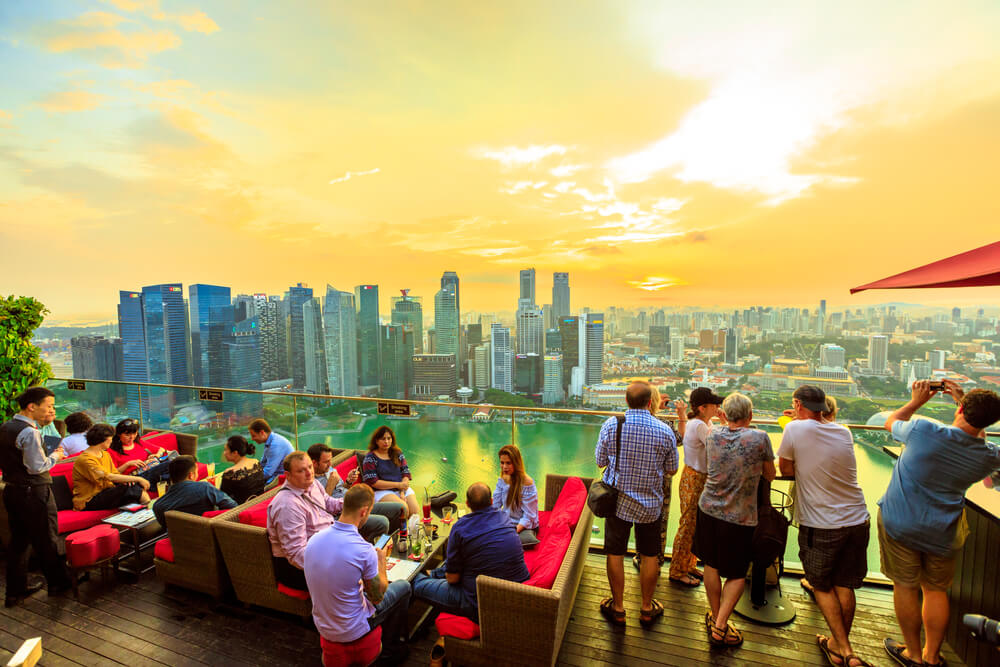
28. Save Money by Having a Drink with a View
To visit the Marina Bay Sands observation deck, you must pay the $26 SGD admission fee. At the same time, a signature cocktail at Cé La Vi, which sits on the same rooftop observation deck will cost you $25 SGD before tax and service charge. So skip the high-admission viewing point and have a drink at one of the most scenic rooftop bars in the world.
Note that the infinity pool on top of the Marina Bay Sands is restricted to hotel guests only.
29. Follow the Local Laws, But Don’t Stress
Singapore has long had a reputation for strict laws. Many travel shows and articles about travel to Singapore still like to highlight this perception and the fact that the country still has corporal punishment. However, most visitors will be oblivious to the perceived strictness in Singapore. Perceptiosn are often that it is just a pleasant city with many common sense laws focused on keeping it clean. Though the death penalty may get headlines, most punishments for petty crimes result in fines for bad behavior.
Be mindful of the laws and signs highlighting them. Below are common laws that visitors should know about.
Laws to Know:
- Chewing gum is banned, leave yours at home.
- Littering carries a heavy fine.
- Smoking can only take place in designated areas.
- Vaping is banned.
- Some prescription drugs are banned, check yours before you pack them.
- Illegal drugs are against the law and carry harsh penalties.
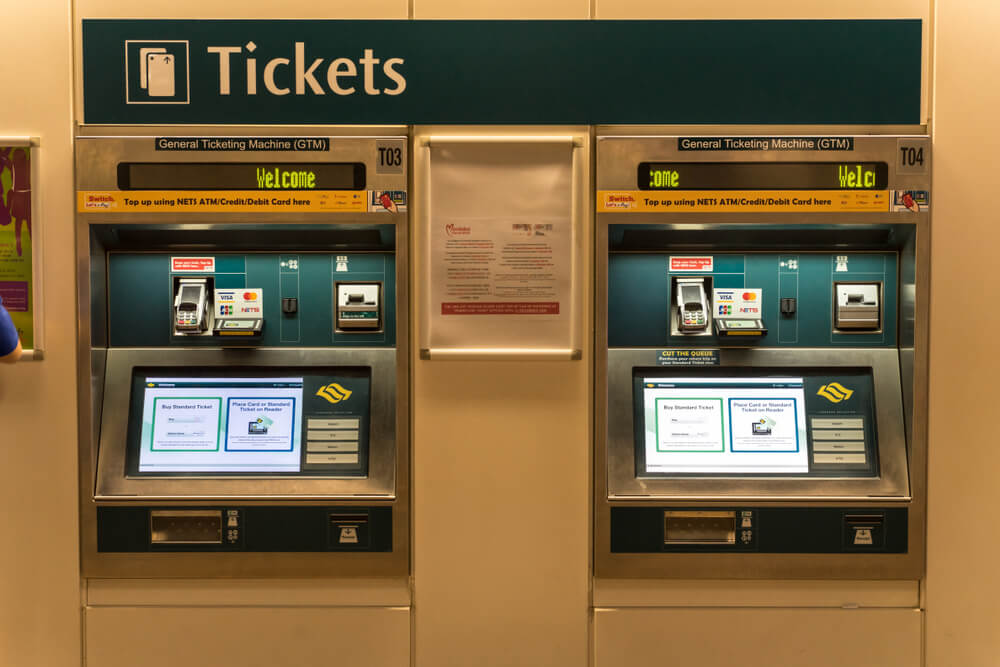
30. Get an EZ-link Card for Ease of Travel
EZ-link cards are the stored value transportation cards. They can be used to tap in and out of MRT stations and on buses. They cost $15 SGD to buy at any MRT station or 7-11 convenience stores. Each card comes with $10 SGD of value, with a $5 SGD non-refundable deposit for the card.
On a short visit, it’s hard to justify the $5 SGD deposit in terms of savings. Though, for ease of traveling around the city, especially on buses, those looking to save time for a small cost will get good value from the card.
31. Consider the Singapore Tourist Pass for a Busy Day Out
Offering all-day travel on city buses and MRT trains, the Singapore Tourist Pass is similar to the EZ-link card, except for 1-3 days of unlimited travel. Available at MRT stations, the pass requires a $10 SGD deposit and costs $10 SGD for one day, $16 SGD for two days, and $20 SGD for three days of travel.
While the pass offers excellent value for those traveling back and forth across the island, it requires a decent amount of travel to pay for the pass compared to regular tickets. In addition, MRT trips start from $0.95 SGD for short trips, so unless you take many trips over long distances in a day, it may be hard to justify.

32. Get a Singapore Go City Pass to Save on Attractions
This tourist pass includes admission to many of Singapore’s top attractions for 2 to 7-day periods, offering a good value for those with many paid attractions on their must-see list. The pass includes Universal Studios Singapore, Garden’s by the Bay’s paid gardens, the Long Bar at Raffles, S.E.A Aquarium, and much more. Find the details of the pass here.
Calculate the expected value before purchasing. Singapore offers plenty of free cultural attractions and its top museums are not included as part of the pass. So for some the pass may not be worth it. However, if you are planning to visit Universal Studios, the pass will often make sense. This works out well if there are at least a few other sights included on the pass that interest you.
33. Visit a Mix of Theme Parks, Gardens, Museums, and Cultural Sights
Singapore is most appreciated by visitors when they can enjoy a diverse mix of sights and experiences. It’s easy to fill an itinerary with too many similar activities and then not get a full appreciation of what the Island-state has to offer. You will get a more well-rounded itinerary by mixing the types of sights you visit. Combine a day out in Little India with the Singapore Botanical Garden, Sentosa Island’s attractions, and the National Museum of Singapore.
34. Carry Some Cash
For most of your time in Singapore, you’ll be able to get by using your credit card. This method generally is recommended if you have a credit card with no foreign transaction fees. However, there are still places where having cash is essential. Especially at hawker centers, where many shops don’t offer the ability to pay with a card.
Beyond the practical reasons, it’s also a fun experience to see and use a foreign currency when most transactions are becoming digital. Given the certainty of the world eventually becoming a cashless society, getting to pay for things in cash in a foreign country is still an exciting part of the travel experience.
35. When Getting Cash, Use an ATM for the Best Rates
ATMs are the best option for getting Singapore Dollars in the country. They offer highly competitive exchange rates, as the rate is determined by card providers, such as Visa or Mastercard. In addition, the fees are relatively limited, with only the fee charged by the machine and your bank, which you can confirm beforehand if your bank has any fee-waiving agreements with any Singapore banks.
Foreign Exchange stands at the airport do not offer nearly as competitive rates as ATMs. While they may advertise themselves as fee-free, they typically profit from the poor exchange rates they offer. High fees and bad rates are reasons to avoid exchanging money at banks before travel.
Learn more here about tips for foreign exchange while traveling.
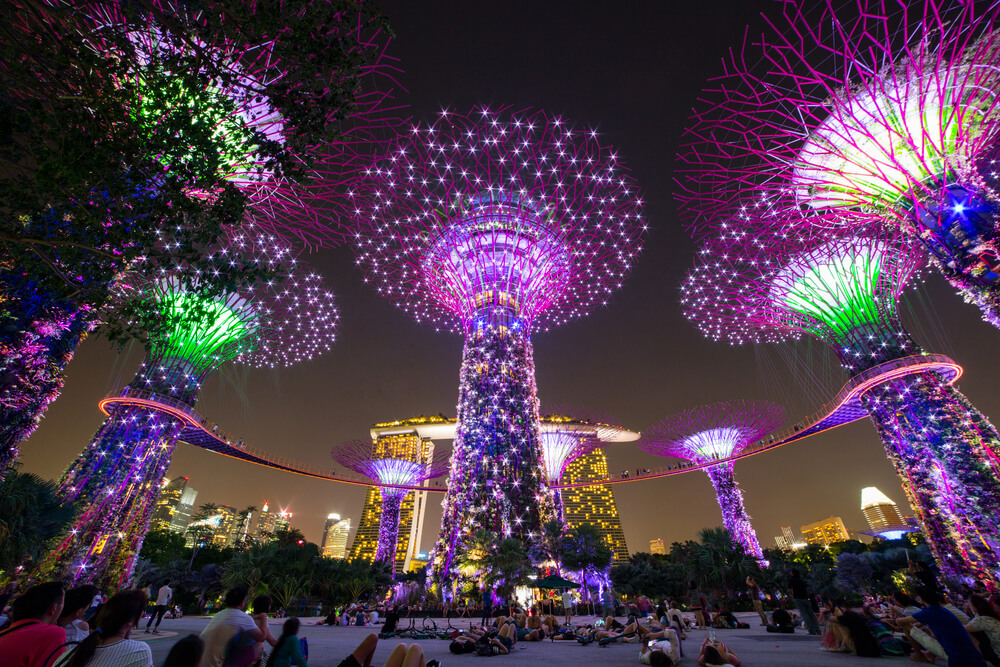
36. See the Gardens by the Bay Light Show and the Marina Bay Sands Water Show Back to Back
The Gardens by the Bay light show in the supertree grove is offered at 7:45 pm and 8:45 pm daily, while the Marina Bay Sands Water Show is at 8 pm and 9 pm, with a 10 pm show on Friday and Saturday nights.
Head to the Marina Bay Sands Water Show at 8 pm, and you’ll have plenty of time after the 15-minute show to walk over to the supertree grove at 8:45 pm for the Gardens by the Bay Light Show.
37. Don’t Stress Over Dining Advice from Locals
One of the most common travel tips is to go where the locals go. This tip applies to dining, shopping, and sightseeing, but most often when looking for the right place to eat. In Singapore, you’ll find no shortage of recommendations from locals on where to eat and who offers the best version of a dish.
It’s easy to get carried away following local advice in Singapore, with many Grab and taxi drivers offering tips on where they like to go. Avoid stressing about following every recommendation or sorting through conflicting advice on who serves the best chili crab or laksa. Locals often don’t live near the city center where many visitors stay, so following a recommendation to the best place for a dish that requires you to travel 45 minutes may not be the best decision.
Take parts of the advice and recommendations that fit your itinerary, but don’t stress about optimizing too much based on locals’ suggestions.
38. Dress Appropriately for Temples
Research ahead if you have a temple in your itinerary for a specific day. Different temples in Singapore have different dress codes. Some require long pants or skirts. Some require covered shoulders and no tank tops or halter tops. Hindu and Buddhist temples have different requirements, so it’s best to confirm ahead rather than be surprised when you arrive.
39. Get a Singtel Prepaid Sim Card to Stay Connected
Available at the airport upon arrival or convenience stores around the city, Singtel offers the best combination of service coverage and value with their prepaid hi!Tourist sim cards. These provide exceptional data allowances and local calls while offering different lengths of validity depending on your trip.
Suppose you have an unlocked mobile phone that allows you to use a different sim card. In that case, this is a much cheaper option than data roaming from your home mobile provider and more convenient than relying on free wi-fi around Singapore.
Find the details of the sim card here.
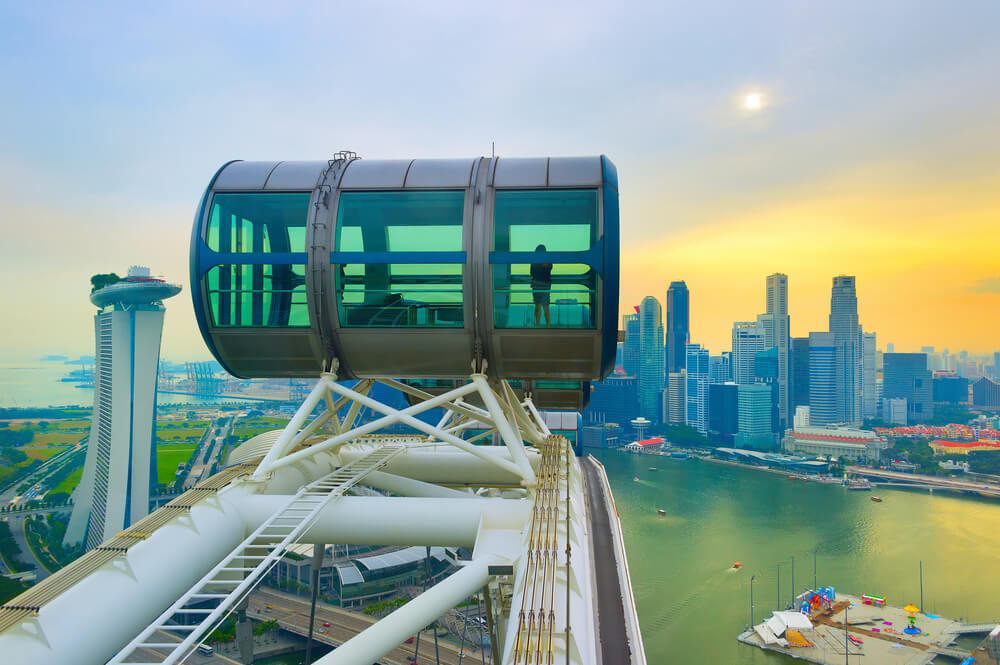
40. Decide if You Want to Pay for a View
Each visitor has different priorities, so it’s worth considering how much you prioritize taking in the city’s best views. For example, the Singapore Flyer Ferris wheel costs $40 SGD per adult, the Marina Bay Sands Observation Deck costs $26 SGD per adult, and a drink at Cé La Vi starts at around $25 SGD for a cocktail before tax and service charge.
While Singapore offers a beautiful skyline, your willingness to pay the high ticket prices for visiting the viewing decks will likely depend on your previous travel experience. Additionally, many could argue that the views from the ground are impressive enough that paying for a higher view may not justify the cost.










